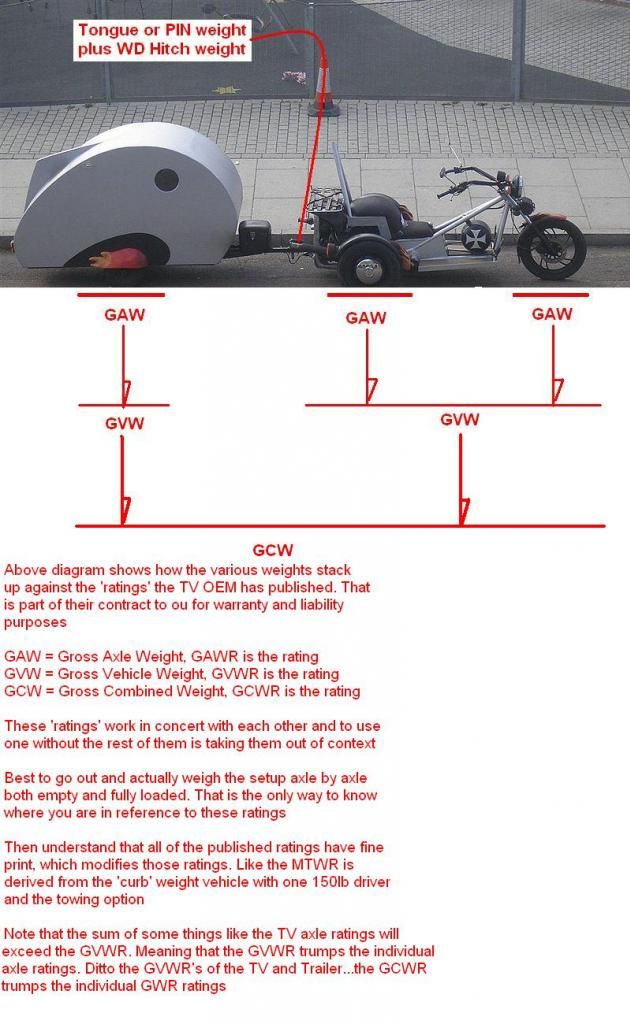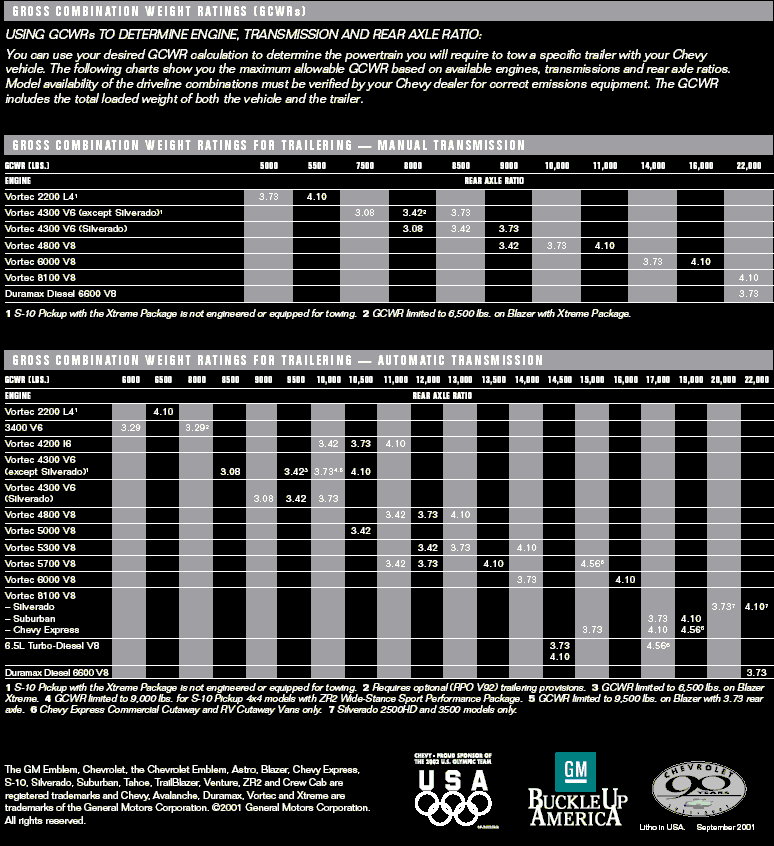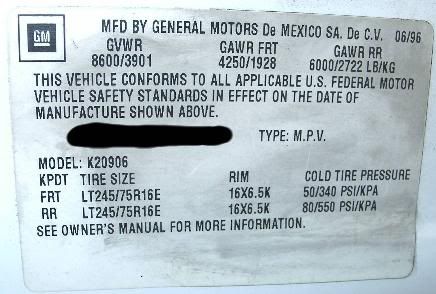You have one of the smaller half tons with that 3,825 RGAWR and most likely will
be your limiting factor, or weakest link
Choices:
- Load lightly for both TV & TT...hope with crossed fingers
- Get a bigger TV
- Get a smaller TT
Why said using your numbers...the only way to truly know is to weigh it and if
not possible, then use their maximums. Especially the trailers to work it backwards
to the TV
A lot depends on how you load, how big your family is (the stand used by all
OEMs is the insurance actuary's 150lb person for each seat belt), etc, etc
Guessing has the risk of guessing wrong and then break down sooner than later
somewhere out in the boonies with a spouse mad as a wet hen yelling you for
making that risk management decision (AKA gambling)
Note that my 8.6K GVWR has a RGAWR of 6,000 lbs. Your 7.2K GVWR has
a RGAWR of 3,825 lbs...+2K less than my 3/4 ton truck. That is where
most of the weight (no matter fiver or tongued) goes when towing
Here is that simple formula in graphical form:
Finding Towing CapacityBelow quote and diagram from the above thread
BenK wrote:
Agree with most of the advice given and add
The below diagram will help you understand, decipher the HOW2 figure it
out to do the simple math towards finding your actual rating numbers
First, here is the diagram of how the ratings system looks like in a
graphical form. Hope you can see that if you go over any *ONE* rating,
that the rest of the system can be within, but that one overage becomes
the weak link....limiting factor
 howmuchcanitow howmuchshoulditow
howmuchcanitow howmuchshoulditow
You also need to load and weigh your TV as suggested. That is the basis
for all in this scheme
On that, you need to decide for yourself whether you believe in the
ratings system or not
If not, then all of this is academic and do whatever you wish, but know
that you then have taken all the OEMs off the warranty and liability
hook. You will now own both warranty and liability
If yes, then read up, ask questions to learn HOW2
This is an old chart that shows how GM's tow ratings looked like back
in 2001 or whenever they printed these documents
NOTE that there are BILLIONS of bucks behind it, but so many...most
people take any individual number as an absolute. Meaning that there
are other factors...and most of that is embedded in the fine print
Not just this OEM, but *ALL* OEM's do this, as that is the only way
they can compete for your dollars.
 GCWRchart
GCWRchart
Do wish the OEMs would have continued to publish charts like the above
As today's info is much tougher to find...many times wonder if it is
so well organized today... Personal opinion...the OEMs no longer have
marketing folks who understand towing heavy anymore. Plus their demographics
surveys no longer show 'enough' buyers towing heavy...so an almost lost
art in building TVs for heavy towing
Also note that was back then and now things have changed. Mainly in
the sciences embedded (design, engineering, process, material, etc)
have gotten better. Mine is a GMT400 series truck. The above GCWR
chart is for a GMT800 series truck, yours is a GMT800 series truck
Too many will only see the three variables listed on that chart- Transmission type
- Engine type & size
- Differential ratio
But there are many more attributes (factors) embedded that are NOT
clearly shown that folks are ignorant of, ignore or don't care to
consider. Somewhere else in the OEMs documentation will be reference
to the basis for all ratings...'curb' and one driver...that one driver
is the proverbial 150lb person from insurance actuary tables from
decades ago... A PS on that 150lb person...boating industry (Coast
Guard driven) has changed that to define that person as a 180lb person now
The door label referenced by others is the ratings for 'your' vehicle
Here is mine, a 1996 Suburban.
 mydoorlabel
mydoorlabel
So, after you have weighed your fully loaded and ready to go camping TV
Plug that weight into the diagram
Then find the actual weights of the trailer you are considering. If no
actual, then use it's max rated weight (GVWR) and use that with the
percentage tongue/PIN weight of the 'dry' trailer. That will give you
the trailer's GVWR tongue/PIN weight
The GCWR will then be the bottom line comparison for your risk management
decision (AKA gamble) on how much design margin you wish to have (AKA safety factor)
 howmuchcanitow howmuchshoulditow
howmuchcanitow howmuchshoulditow GCWRchart
GCWRchart mydoorlabel
mydoorlabel